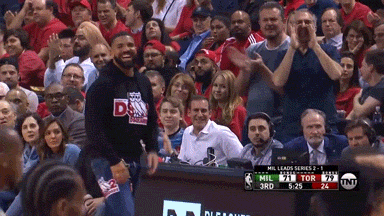http://grantland.com/the-triangle/2015-mlb-playoffs-bullpen-managers-mike-matheny-joe-girardi/
The article ranks managers based on bullpen management using a stat called BMAR, and it doesn't look good for Gibby.
I thought that Gibbons did a good job with the bullpen during both his tenures, but according to this stat, he has been one of the worst bullpen managers in baseball over the past 3 seasons.
This should provide vindication for the fire Gibbons crowd. I don't know enough about the stat to dispute it.
The stat explained:
After the 2009 season, former Baseball Prospectus author and quantitative consultant Tim Kniker developed a managerial reliever-use rating system, which he dubbed Bullpen Management Above Random. BMAR’s purpose is simple: It’s a way of assessing how closely each manager lined up his best relievers with his team’s highest-leverage relief opportunities. Essentially, it’s a stat that tells us how often a manager’s bullpen moves made fans lie awake and wonder, “Why him?”
BMAR rates managers based on their relievers’ Weighted On-Base Average allowed to righties and lefties over the previous 12 calendar months.2 BMAR’s baseline — the standard by which all managers are judged — is a team’s theoretical distribution of bullpen outings had the manager assigned relievers using eeny, meeny, miny, moe. To produce the ratings, Tim sums each bullpen’s actual totals of left- and right-handed batters faced and calculates how much more effectively the manager could have distributed the same workload, given the relievers on his roster at the time. You can think of each manager’s BMAR as an answer to this question: In light of the bullpen he had, how much better (in wOBA points allowed) were the relievers he did choose than the relievers he could’ve chosen at random?
Shortcomings:
A couple of caveats: First, while we know which pitchers were on the active roster on a given day, we don’t know which pitchers were actually unavailable (or less effective than usual) because of overuse, illness, nagging injury, or a stubborn latch on the bullpen-bathroom door. And we’re assessing only one aspect of bullpen management: which reliever the manager chose once he decided to make a move. If some managers are better than others at judging when to take out their starters, or at keeping relievers fresh by limiting how often they warm up or enter games — and some of them undoubtedly are — then this method will miss that extra value. And since we’re simply reassigning each team’s actual matchups against left-handed and right-handed batters to the most logically leveraged scenarios based on ability, we’re also overlooking the ability of some managers to gain the platoon advantage more often. But we can judge managers independent of bullpen quality: To adjust for the fact that some managers have better late-game relievers to work with, and can therefore make more of a difference by choosing their best available reliever at a crucial moment instead of their mop-up man, we’ll compare each manager to a personalized standard of how well he could have done with his own array of relievers.
According to Kniker’s wOBA-to-wins conversion, the difference between the best and worst manager by BMAR in a given season is on the order of four wins: not enough to turn a good team into a bad one (or vice versa)
Matheny and the Blue Jays’ John Gibbons may have been among the worst bullpen managers this season, but they didn’t prevent their teams from taking division titles.





























